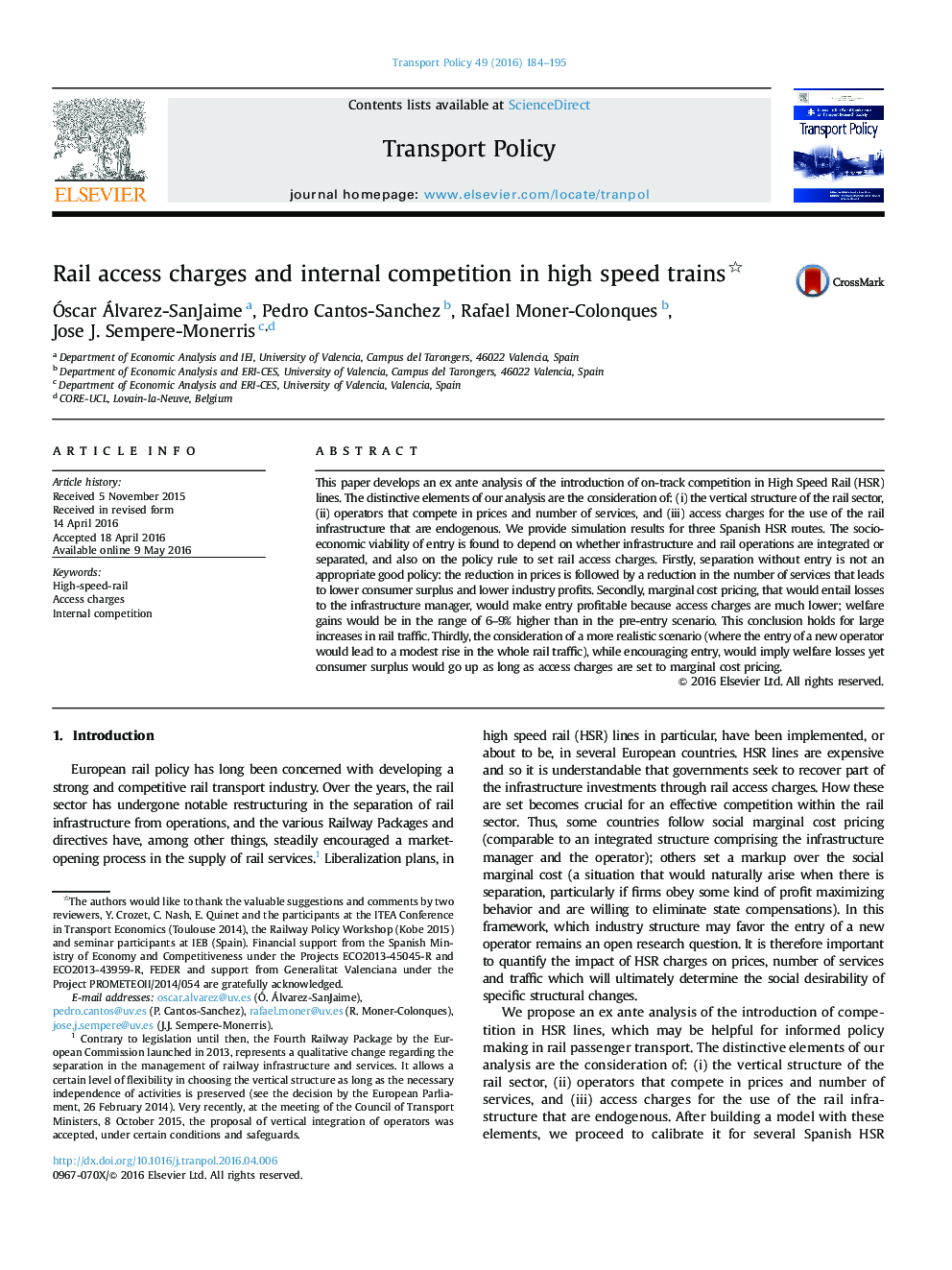| Article ID | Journal | Published Year | Pages | File Type |
|---|---|---|---|---|
| 1064785 | Transport Policy | 2016 | 12 Pages |
•Vertical separation without entry or marginal infrastructure cost pricing is wrong.•Entry is profitable if the entrants fixed costs are half or lower than incumbent's.•Entry is enhanced if vertical separation or marginal cost pricing are in place.•Entry is never welfare improving unless it generates enough passenger traffic.•Vertical separation with marginal cost pricing is the best option in welfare terms.
This paper develops an ex ante analysis of the introduction of on-track competition in High Speed Rail (HSR) lines. The distinctive elements of our analysis are the consideration of: (i) the vertical structure of the rail sector, (ii) operators that compete in prices and number of services, and (iii) access charges for the use of the rail infrastructure that are endogenous. We provide simulation results for three Spanish HSR routes. The socio-economic viability of entry is found to depend on whether infrastructure and rail operations are integrated or separated, and also on the policy rule to set rail access charges. Firstly, separation without entry is not an appropriate good policy: the reduction in prices is followed by a reduction in the number of services that leads to lower consumer surplus and lower industry profits. Secondly, marginal cost pricing, that would entail losses to the infrastructure manager, would make entry profitable because access charges are much lower; welfare gains would be in the range of 6–9% higher than in the pre-entry scenario. This conclusion holds for large increases in rail traffic. Thirdly, the consideration of a more realistic scenario (where the entry of a new operator would lead to a modest rise in the whole rail traffic), while encouraging entry, would imply welfare losses yet consumer surplus would go up as long as access charges are set to marginal cost pricing.
